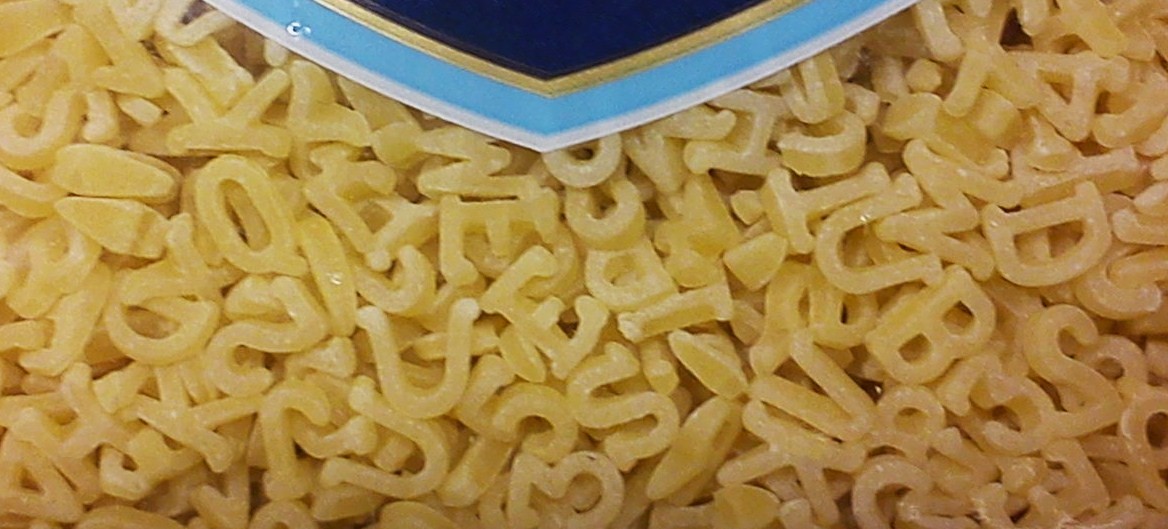
It was probably due to World War Two and the British servicemen returning from Italy that interest in Italian food began to take off in the UK… as immortalised by Sophia Loren and Peter Sellers. As regards pasta, in the 1950s one had to shop at International Stores or J Sainsbury to buy macaroni and spaghetti, usually by weight in paper bags. That was about it! Then there was that bland tinned spaghetti, spaghetti hoops and alphabetti spaghetti, all anything but al dente, and in very bland sauces. What a difference now, seven decades later: one can buy an almost infinite variety of shapes and sizes of pasta, usually in plasticky packaging. So much so that there is at least one type of pasta for every letter of the alphabet – the Italian alphabet, that is, which does not use j, k, w, x and y. The names relate to the shapes, as we’ll see; Italians can be quite particular about which shape of pasta goes best with different types of sauce – it’s all to do with the available surface area to carry the sauce to best effect. My mouth is watering just writing about it!
What follows is an exploration and explanation of the most popular types of pasta in alphabetical order… at the same time exploiting their names from a linguistic point of view… yes, one can learn some of the basics of the Italian language from the names of different types of pasta! The pasta names can then serve as examples to remember the ‘rules’! My confession: even as a language teacher of many years, it was not until I started teaching Italian in about 1990 that I really began to appreciate language the way I do now… The revelation which brought this about was discovering the derivation of … spaghetti! More about that later, but first, some essential basics:
- Italian vowels are pure, with only one sound for each: a as in ‘car’ but shorter; e as in ‘egg’, i as in the ‘ee’ in ‘peep’, o as in ‘cot’ and u as in the sound ‘oo’ in ‘cook’‘. Now say aloud: a, e, i, o, u… and keep repeating them!
- All letters are always pronounced except for h, which is used to ‘protect’ and preserve the normal value of c and g; examples to follow!
- As in English, words of more than one syllable have emphasis on one of the syllables. Examples to follow!
- A few letters are pronounced differently from English in certain positions and combinations. Again, the pasta names will provide examples to memorise!
- Double consonants have double value, as you already know in spaghetti! So, how do YOU pronounce Prosecco? And latte? (If you ask for this in Italy, you’ll just be served milk!)
A tavola… Buon appetito!
So, here goes… and we’ll be learning as we go!
A is for anelli – little rings; the ending –elli is diminutive, ie, means ‘little…’.
You may also know arancini, meaning little oranges, the ending -ini being another diminutive ending; they are filled rice balls, so not pasta; we’re including it here for the pronunciation, sounding like ‘aranchini’ (‘c’ before ‘e’ and ‘i’ = English ch sound). A favourite dish of the eponymous Inspector Montalbano, I once tried making them… and failed miserably as they wouldn’t stick together – hence the photo!
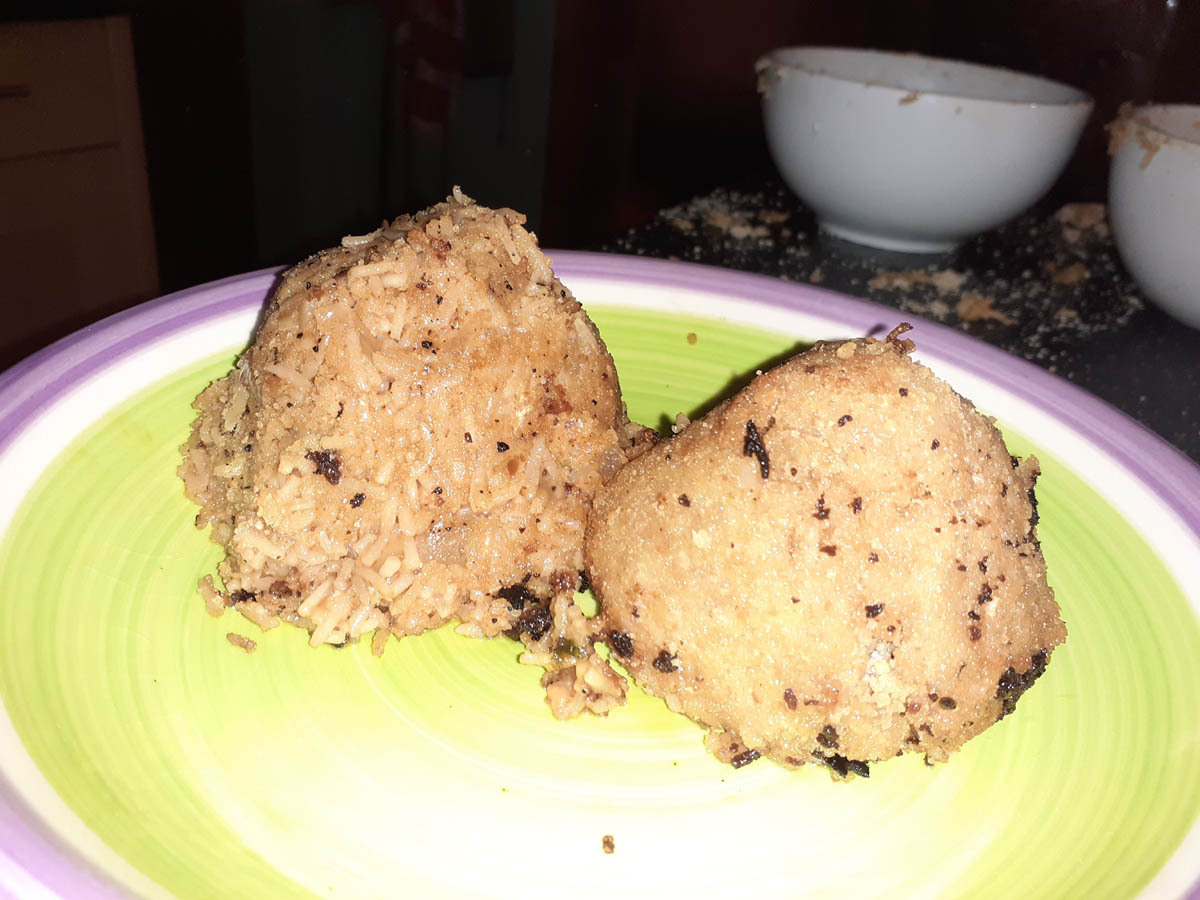
While we are on the letter ‘a’, it’s important to mention the significance of al dente: pasta should never be served overcooked, mushy, soggy, like the tinned stuff, but just slightly chewy – ie ‘to the tooth’.
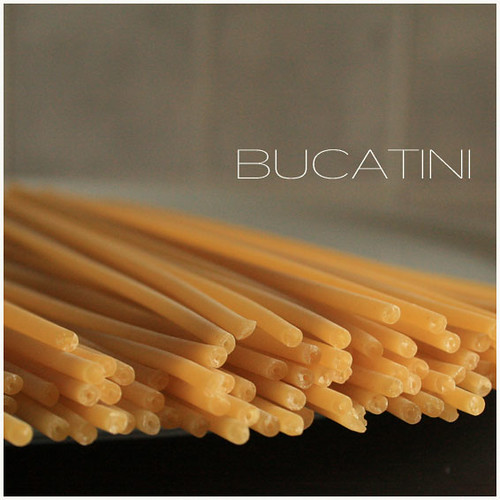
B is for bucatini – tubular pasta, ie, long pasta with a hole through the middle; buco = hole, bucato = holed, bucatini little holed pasta, with the same diminutive ending as arancini above.
As regards the ubiquitous Bolognese sauce, or rather ragù Bolognese, you are unlikely to find it served with spaghetti in Italy, and definitely not in Bologna! More of that later…
C is for conchiglie – pasta shells, (think of conch shells), but pronounced with a k sound (conkiglie),
Also capellini – little hairs, from capelli – hair, probably from capo – head
… and cannelloni – tubes; in this case the ending –one is augmentative, ie ‘large’.
Have you noticed any patterns here? At least, hopefully, the fact that most types of pasta so far end in -i… which is the plural ending for most masculine words… Just conchiglie is feminine plural. So, we can deduce: 1. that Italian nouns are either masculine or feminine, and 2. that plurals end in -i (masculine) or -e (feminine). Let’s continue with the alphabet, and also look out for patterns.
D Ditali are pasta thimbles, this word being derived from dito, finger.
E I can’t find a popular pasta beginning with ‘e’, but the Italian for egg as an ingredient is all’uovo; hence, egg tagliatelle is tagliatelle all’uovo.
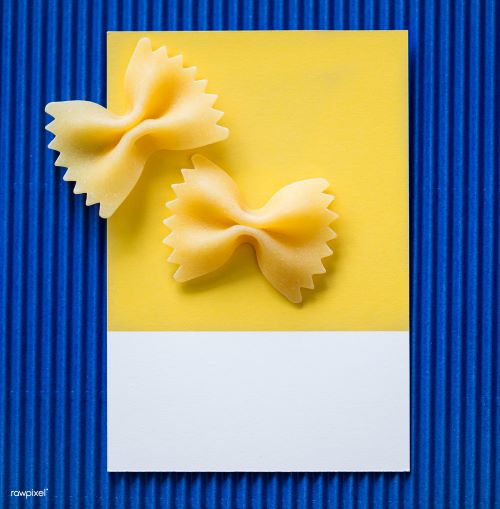
F Several types of pasta here, all with names relating to their shape: farfalle – butterflies; fettuccine are pasta ribbons, derived from fetta, slice and fettuccia, ribbon or tape; then we have fusilli, derived from fuso (spindle)… I’ll refrain from making a pun here!
G Gnocchi is used both for little potato dumplings and for pasta the same shape. Two language points: gn– is pronounced like ny-; gnocco is a singular dumpling, but for the plural ending in -i, the ‘h’ is used to keep the ‘c’ sound hard, (otherwise c+i would be pronounced like ‘ch’; preserving the sound is the priority, hence the spelling has to be changed).
H There is no pasta name beginning with ‘h’, but as we’ve seen, the ‘h’ is necessary in many words to keep the ‘c’ or ‘g’ hard, such as we’ve just seen in gnocchi and as we all know in spaghetti.
I Again, to my knowledge there is no popular pasta beginning with ‘i’, but with its meaning as ‘the’ (masculine plural), it appears in, eg, pasta con i funghi, pasta con i peperoni (pasta with mushrooms, pasta with peppers).
L Lasagna is the essential ingredient for a popular recipe of the same name: layers of pasta sheets, with ragú (meat sauce) alternating with besciamella (bechamel sauce). Everyone seems to know how to pronounce the name correctly, with the –gn– having a –ny- sound, as we saw with gnocchi.
Then we have linguine – little tongues, recognisably derived from lingua – long pasta of oval crosssection, best for serving with pesto: basil sauce.
M What else – macaroni, of course, probably the first widely available dry pasta when I was a kid in the 1950s… remember Quaker Quick macaroni? In Italian the name of these short-cut curved tubes is actually maccheroni – notethe –ch- again. Not sure I appreciate the expression ‘mac and cheese’, though if well prepared, I do enjoy it!
N No pasta shape I know of begins with ‘n’, but my current favourite pasta dish – and part of my limited repertoire – is pasta ‘ncasciata, a taste acquired thanks to my favourite Italian TV series, Inspector Montalbano. This pasta bake is Commissario Montalbano’s favourite dish, so I just had to learn how to prepare it. More complex than the usual pasta bake, it is described in the second Montalbano novel as “a dish worthy of the gods of Mount Olympus”. The word ‘ncasciata’ is possibly from ‘ncacjo’ a dialect word for a brazier, or embers, which may indicate its humble origins. Any short-cut pasta is the basic ingredient, such as penne or fusilli, but it takes a while to prepare and assemble the ingredients; I use an Italian recipe but you could try the English version.
O Many large UK supermarkets stock orecchiette – little ears, (from orecchie), pronounced with a hard k in the middle, being the ch again.
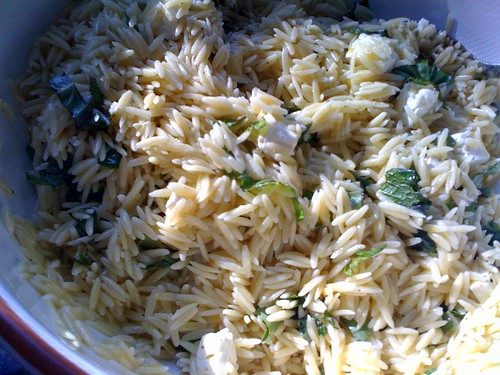
Orzo is barley shaped pasta, from the name of the grain.
P The ubiquitous penne get their name from quills: interesting to compare the word with pen, pennant.
If ordering penne in an Italian restaurant, remember the rule about pronouncing double consonants: the word with only one ‘n’ means something quite different, and will cause amusement to the staff and embarrassment to you!
Pappardelle are wide strips of flat pasta.
Q Yes, there is a pasta whose name begins with a ‘q’: quadrettini, little pasta squares, from quadro – square, picture; two diminutive endings together here: –ett– and –ini-.
R Ravioli are also pasta squares, but larger, and filled with meat, cheese, spinach or whatever;
Rigatoni: short-cut, ribbed pasta tubes; riga is stripe, so rigato means striped. An Italian description explains: “la rigatura della pasta permette un maggior raccoglimento del sugo”, (“the ribbing on the pasta allows for better picking up of the sauce”.
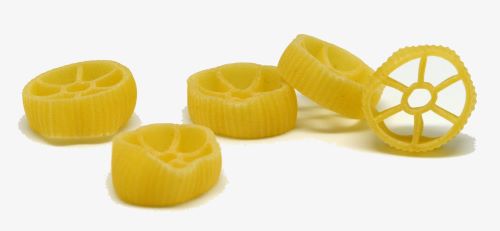
Rotelle are small wheels, from ruota (wheel).
S Everyone knows spaghetti, but as I came to realise in 1990, the name actually means ‘little strings’! That’s because spago is Italian for string; then add the diminutive ending and you have it. We all also know that is pronounced with a hard g – withoutthe ‘h’ it would sound like a j.
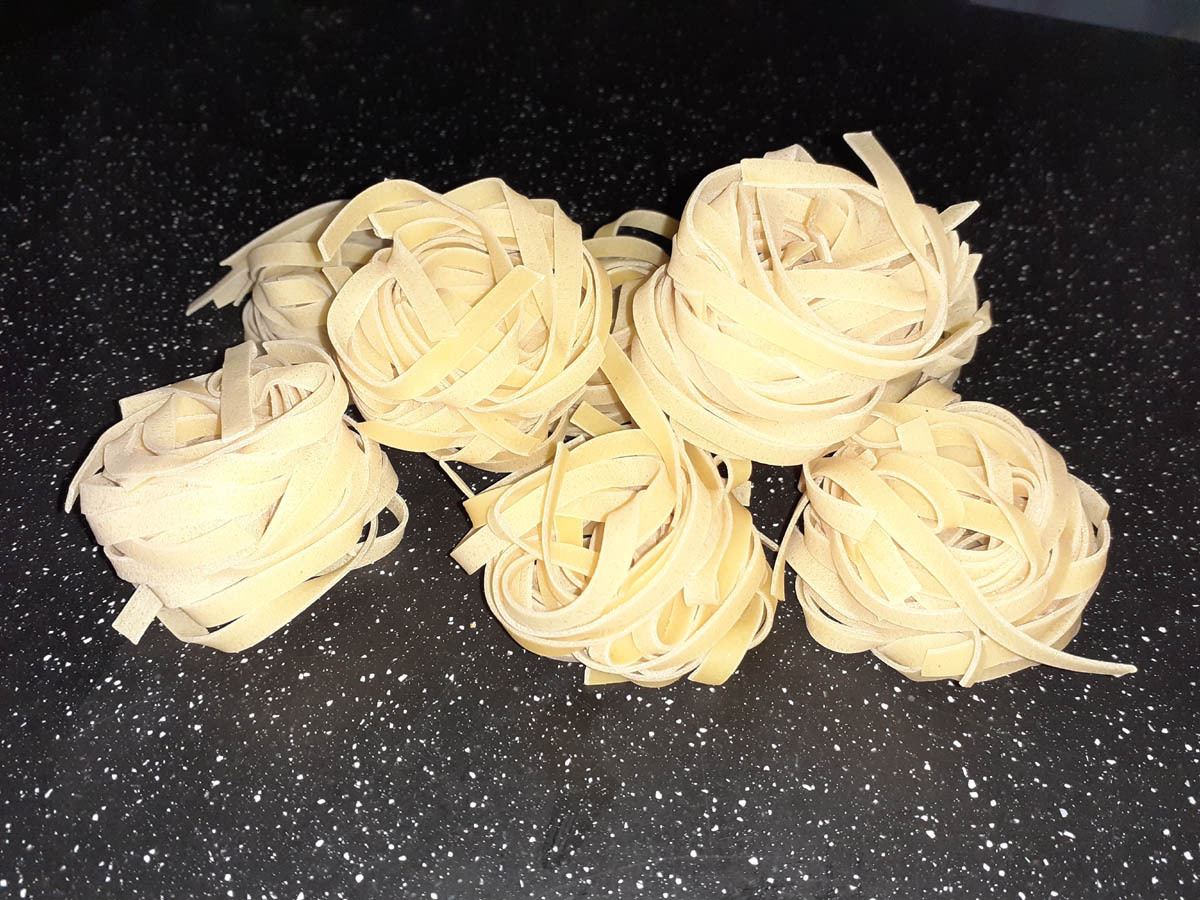
T The word tagliatelle is related to ‘tailor’ and ‘tally’: why? Because tagliare is ‘to cut’, and this pasta is long strips cut from a sheet; a tailor cuts cloth, and a tally stick had notches cut into it to keep count of animals, produce or whatever. (The stick would be split in two for the farmer and the merchant each to have a ‘tally’; and to prove that neither was cheating the other, they could put the two together to see that they… tallied!). As regards the tagliatelle, they are traditionally the best pasta to have with ragú bolognese, meat sauce cooked Bolognese style: the flat shape offers more surface area for the sauce to stick to!
Tortellini are small stuffed ring-shaped pasta or curved envelopes, and tortelloni are the same but bigger (note the diminutive and the augmentative); the name is possibly related to tortora (turtle dove).
U OK, not a pasta shape beginning with ‘u’, but as we’ve seen, an important factor with some types of pasta is their being made with egg – uovo (plural uova). So, for example, tagliatelle all’uovo is tagliatelle with egg… even tastier!
V Vermicelli are like little worms, the name being derived from verme (worm), with the diminutive ending –ello-; like other nouns ending in –e, the plural ends in –i.
Z Ziti are long pasta tubes, often broken into pieces for cooking; probably best with the type of sauces which will be absorbed into the hollows.
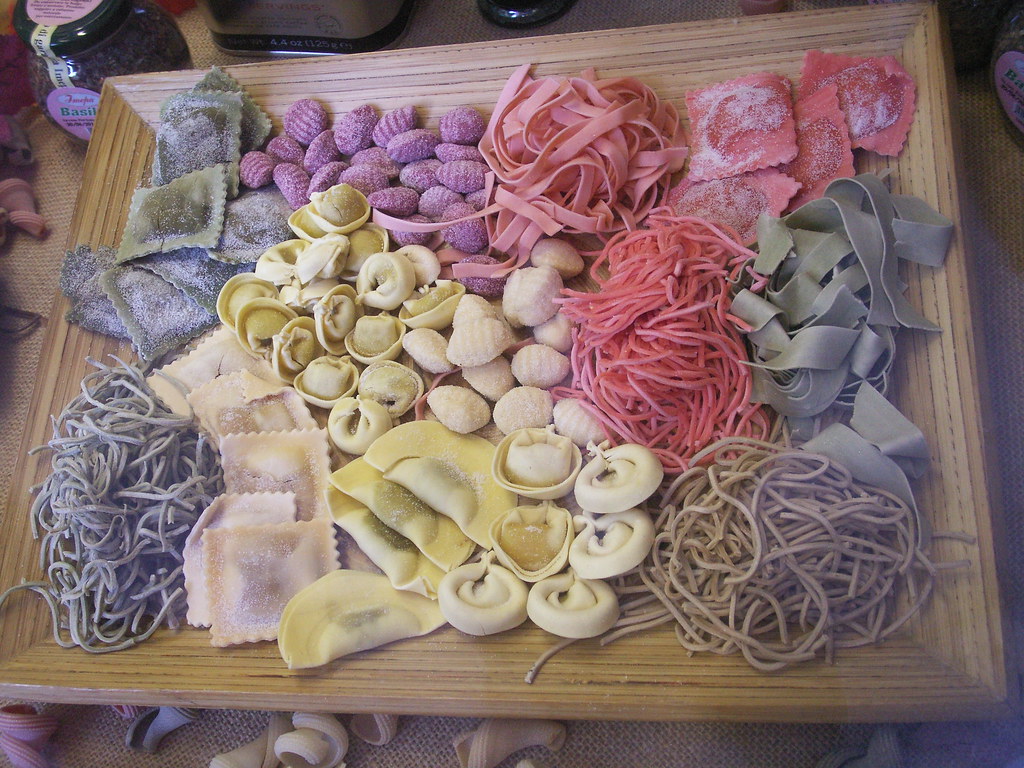
Spaghetti Junction
So, to finish, let’s draw together the strands of language knowledge we’ve drawn from our exploration of the pasta alphabet.
Singulars and plurals:
As we’ve seen in pasta names, the basic pattern for masculine singular / feminine singular / masculine plural / feminine plural is: o/a/i/e;words ending in –e in the singular change to –i in the plural. Most of the examples in the table should be easy to understand, except maybe figlio – son, and figlia – daughter.
| masc sing | fem sing | masc plur | fem plur | |
| Final vowel | -o | -a | -i | -e |
| Nouns -o | figlio | figlia | figli | figlie |
| Nouns –e | agente | agenti | ||
| Adjectives –o | rosso | rossa | rossi | rosse |
| Adjectives –e | grande | grandi |
Pronunciation and spelling
Apart from what we’ve said about vowel sounds in Italian, most consonants are as in English except:
| c -hard c before a, o and u: capellini, conchiglie, Frascati … but ch sound before e and i: arancini, Cinzano, Montepulciano, Valpolicella g -hard g before a, o and u: ragù (the accent on the ù means pronounce this louder) … but j sound before e and i: gin, Sangiovese |
In both cases, to preserve hard c or g before e and i, Italian inserts an h to protect the c or g:
| che, chi -as in maccheroni, conchiglie, gnocchi, Chianti ghe, ghi -as in spaghetti |
In addition, note the following:
| gl – ly sound – as in raccoglimento (del sugo) gn – ny sound – as in lasagna, gnocchi sc – sh sound – as in besciamella |
| q is always followed by u, together pronounced as kw: quadrettini = kwuadrettini z is pronounced dz as in gorgonzola zz is pronounced ts as in mozzarella |
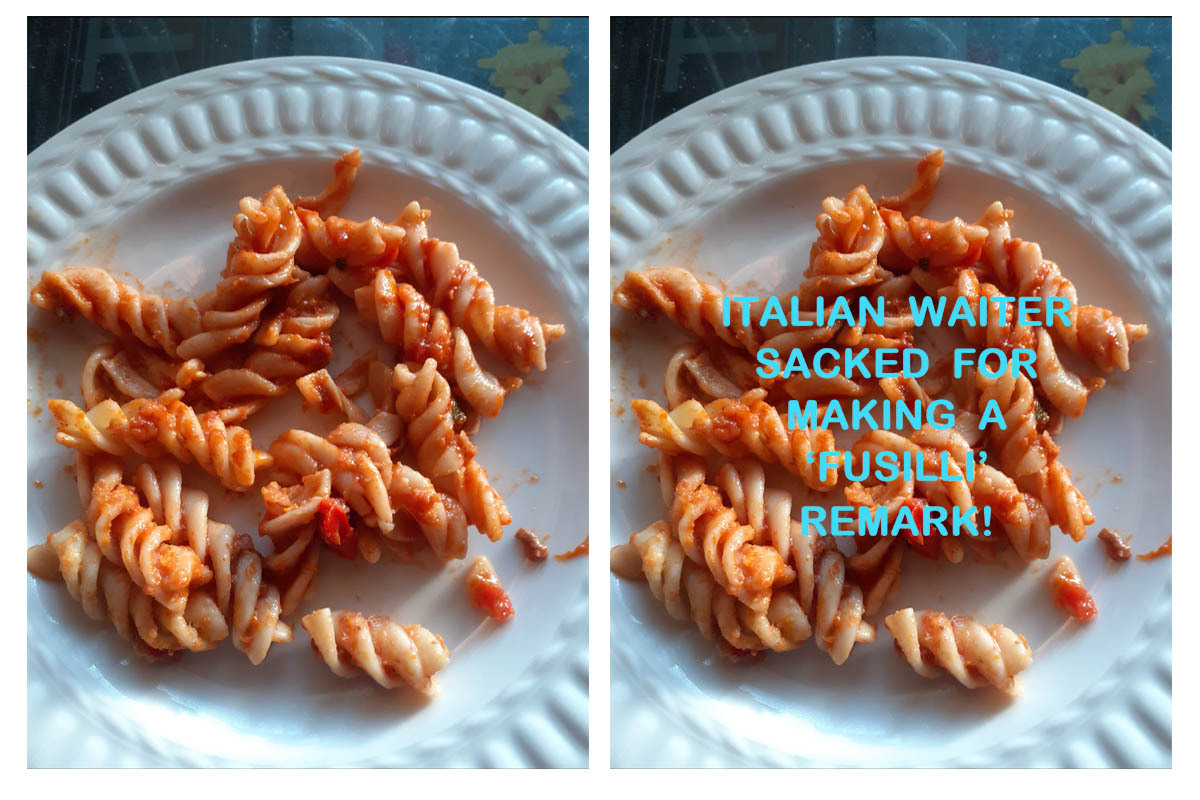
Pasta masta atta lasta!
Correct pronunciation really helps your confidence when speaking another language; by the way, chorizo is Spanish, not Italian, so doesn’t follow the Italian z rule above. Please pronounce it as choriso or choritho! I bet you didn’t notice that I smuggled into the examples a few names of well-known Italian cheeses… and wines and other drinks! A glass of something nice always helps the digestion. If you have digested all of that, you can rightly think of yourself as a pasta master, with the bonus of some basics of Italian!





